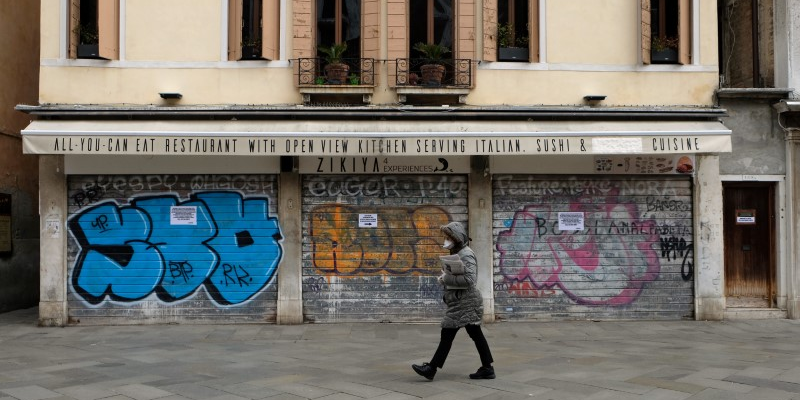- US consumer spending slumped 13.6% in March, the largest drop on record, the Commerce Department reported Friday. Economists surveyed by Bloomberg expected a 12.8% decline.
- At the same time, the personal savings rate surged to a record 33% from 12.7% in March as consumers held onto cash.
- Incomes also increased 10.5%, reflecting the $3 trillion of government social benefits paid during the month.
- Visit Business Insider’s homepage for more stories.
US consumer spending dropped by the most on record in April as the coronavirus pandemic kept businesses closed and people at home.
Household outlays slumped 13.6% from March, the largest drop since 1959, the Commerce Department reported Friday. Economists surveyed by Bloomberg expected a 12.8% decline.
A sharp decrease in spending could have a devastating impact on the US economy as consumption is responsible for roughly two-thirds of gross domestic product. Adjusted for inflation, spending fell by a record 13.2% in April, supporting forecasts for a record GDP drop in the second quarter. The decline was driven by slumps in spending on food and beverages, healthcare, hotels, and restaurants.
The sharp drop in spending pushed household incomes and the personal savings rate up to records as well.
Incomes increased a record 10.5%, the report showed. The median economist estimate called for a 5.9% decline. The jump reflects the federal economic-recovery payments that were distributed under the CARES Act, according to the report - an annualized $3 trillion of government social benefits were paid in April, up from $70.2 billion in March.
The personal savings rate - how much consumers save as a percentage of disposable income - also surged to a record high of 33% from 12.7% as Americans sock away cash bracing for the economic downturn that's rivaled the Great Depression. The drop in spending fueled the jump.
"This is the basis for believing that spending will rebound strongly as lockdowns are eased, but it will also make it easier for Republicans in the Senate to keep pushing back on the idea of further stimulus, for a while at least," said Ian Shepherdson, chief economist at Pantheon Macroeconomics, in a Friday note.
In May, it's likely that stimulus payments and unemployment benefits will tick up while compensation drops, leading to another jump in overall incomes, Shepherdson said.
The PCE price index - the Federal Reserve's preferred gauge of consumer prices - gained 0.5% on the year. It's the slowest advance in the index since 1961 and falls below the central bank's 2% target. The core price index, which excludes energy and food costs, gained 1%, the smallest jump since 2011.
